Besides being pleasing to the eye, greenery also contributes to the mental, physical and emotional well-being of people. The following studies identify the benefits children and youths can gain from regular exposure to greenery.
Better Grades and School Behaviour
In a study conducted by the American Institutes for Research, a group of sixth graders attended outdoor school for six weeks, while another group did not. During the outdoor programme, students carried out hands-on activities such as searching for aquatic insects in a stream and identifying tree species, as well as drawing conclusions on the “health” of a forest. At the end of the programme, the students, teachers and parents were surveyed.
The group that participated in the outdoor education rated better in self-esteem, conflict resolution, relationship with peers, problem-solving, motivation to learn and behaviour in class. These children also had improved Science scores, measured by a pre and post test. [I]
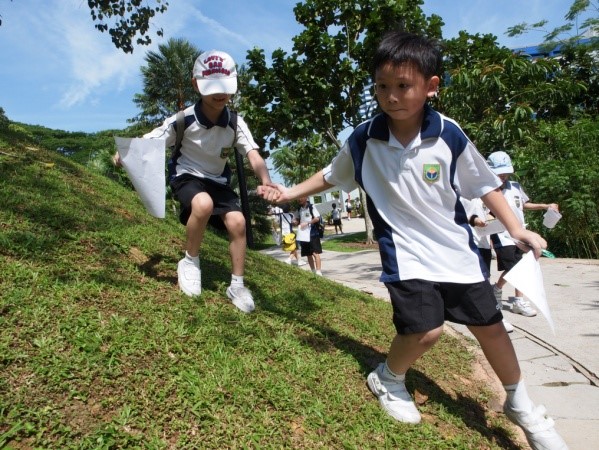
Regular exposure to greenery can lead to better school behaviour, including improved relationship with peers.
Reduces ADHD Symptoms
Children with Attention-Deficit/Hyperactivity Disorder (ADHD) have unusually high and chronic level of inattentiveness, impulsivity and hyperactivity. In a study published by the American Journal of Public Health, ADHD children were observed participating in similar activities conducted in a variety of different settings, such green outdoor environments, man-made outdoor environments, and indoor settings. After each session, parents rated their children on ADHD symptoms, such as difficulty in remaining focused on unappealing tasks, difficulty in listening and following directions, as well as difficulty in resisting distractions. The ADHD symptoms in children exposed to the green outdoor settings reduced significantly compared to the other settings. [ii]
Helps Children Cope with Stress
A study done in New York researched whether greenery helped children cope with stress. It measured how ‘green’ the children’s homes were and studied how well the kids coped with stressful life events such as bullying in school, relocating to another home and family disagreements. The study found that nearby nature buffers the effects of stressful life events on children’s psychological distress. [iii]
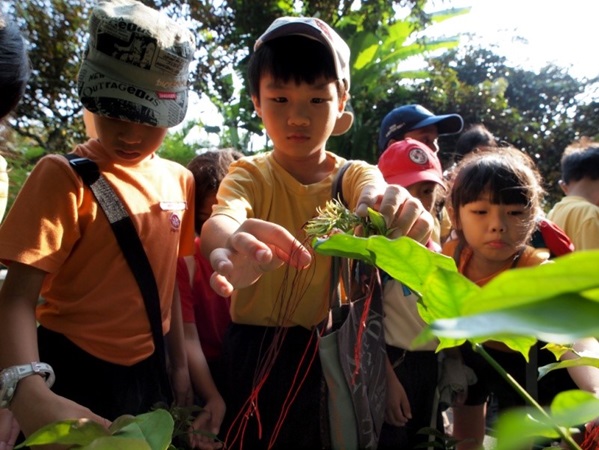
The greener your child’s environment, the better your child would be able to cope with stress.
Develops Psychomotor Skills
“Climbing rocks is more fun than climbing trees – but climbing trees is more fun than boring playground equipment.” These words came from a kindergarten boy. A study in Norway found that preschool children who played in natural areas with trees, rocks and uneven terrain developed better motor skills than those who played in conventional playgrounds.[iv]
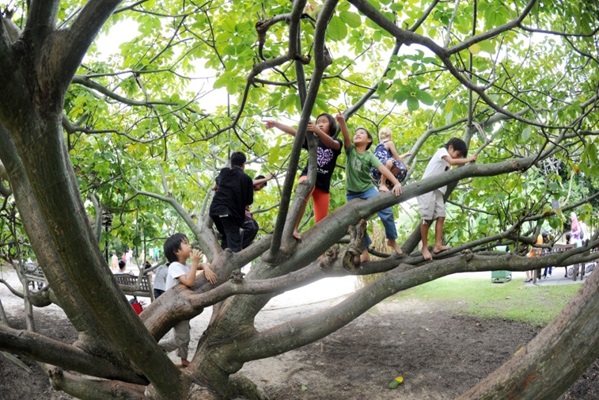
Children who play amongst trees, rocks and uneven ground have better balance and agility.
Reduces Prevalence of Myopia
A study conducted in Sydney assessed the relationship of outdoor activities with the prevalence of myopia in school-aged children. Children participating in the study went through a comprehensive eye examination. Their parents were required to complete an extensive questionnaire about the amount of time their children spent on a variety of indoor and outdoor activities. It was found that the more time children spent outdoors, the lower the rate of myopia. [v]
Improves Cognitive Functioning
Does the view from a child’s home affect his or her well-being? To answer this, a research project that was conducted in America studied the effects of the presence of greenery on cognitive functioning. In the first phase of the study, children were observed in their own homes, which were pre-selected because they lacked in greenery. In the second phase, the children and their families were relocated to housing environments that were greener. The study found that children who were housed in homes that improved the most in terms of greenery also had the best ability to focus. [vi]
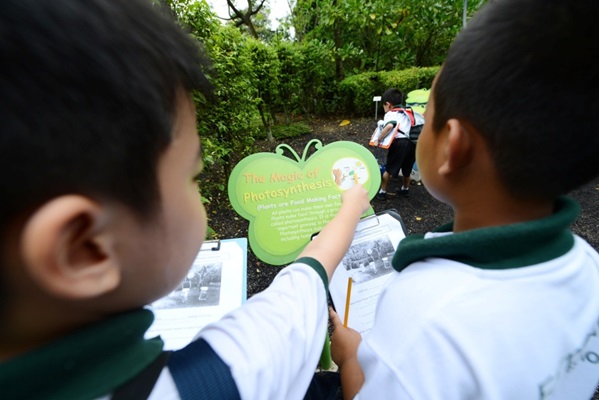
Improves Perceived General Health
A study that was done in Holland investigated the strength of the relationship between the amount of green space in people’s living environments and their perceived general health. The study found that the percentage of green space in a one-kilometre area had a significant positive impact on perceived general health in large cities, especially for the elderly, youth, and people educated up to the secondary school level. [vii]
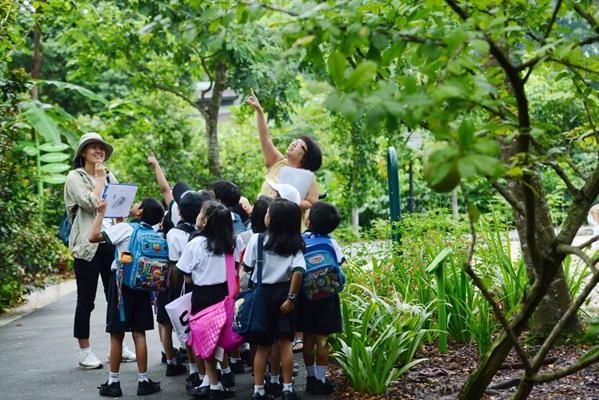
Bring your students on a learning journey to our parks and gardens to reap the benefits of greenery today!
There are certainly many benefits to be reaped from greenery and being close to nature. Bring your students outdoors to enjoy the wonders of our City in a Garden today! With over 300 parks and gardens, four nature reserves and more than 300 km of park connectors in Singapore, there is an abundance of green spaces for you and your students to explore and enjoy.
References
[i] McQuillian, Larry and Louise Kenelly. (2005). AIR study shows beneifts of outdoor environmental studies for sixth grade students.
[ii] Taylor, A., Kuo, F. & Sullivan, W. (2004). A potential natural treatment for ADHD: Evidence from a national study. American journal of public health, 94(9).
[iii] Wells, N. M. & Evans, G. W. Nearby nature: A buffer of life stress among rural children. Environment & Behavior, 35 (3)311-33.
[iv] Fjortoft, I. (2001).The natural environment as a play ground for children: The impact of outdoor play activities in pre-primary school children. Early Childhood Education Journal, 29(2), 111-117.
[v] Rose, K.A., Morgan, I.G., Kifley, A., Huynh, S & Smith, W. (2008) .Outdoor activity reduces the prevalence of myopia in children.Ophthalmology. 115, (8)1279-1285.
[vi] Wells, N. (2000) “At Home with Nature: Effects of ‘greeness’ on children’s cognitive functioning.” Environment and Behavior 32 (6): 775-795.
[vii] Jolanda Maas, Robert A verheij, Peter P Groenewagen, Sjerp de Vries, Peter Spreeuwenberug (2006) “Green space, urbanity and health: how strong is the relation?”J Epidemiol Community Health 2006; 60: 587 – 592.